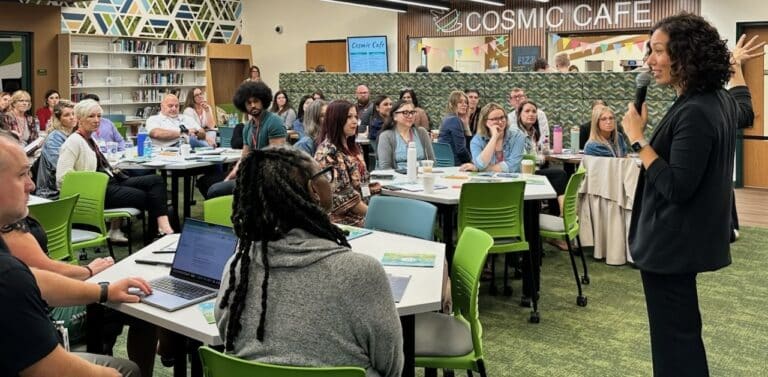Creating a student-centered instructional framework is fundamental to enhancing learning experiences and ensuring consistency across a school district. Such a framework establishes a common language and shared beliefs about teaching and learning, enabling educators to discuss effective practices, give and receive feedback and monitor student growth.

The framework fosters a unified understanding among all stakeholders – leaders, teachers, coaches and students. An effective instructional framework drives professional learning, uses evidence-based teaching strategies to guide instructional decision making and clearly outlines the role of assessment in supporting learning and development. Here are five steps to help you get started on developing a student-centered instructional framework:
Step 1: Establish stakeholder groups and collect inputs
Who in your district needs to have a deep understanding of instruction? Identify and schedule time to meet in small groups with identified stakeholders. For an instructional framework, essential stakeholders might include teachers (varying grade level and subject representation), instructional coaches, principals, curriculum leaders and department chairs.
To establish the why for an instructional framework, have each stakeholder group begin by creating a histogram of how resources have been allocated for professional learning in recent history. Consider funds, people, conferences, events, site visits and professional learning days. Discuss where there is alignment and where there might be disconnect.
Next, each small group should brainstorm responses to these questions:
- How should our district’s vision impact instruction?
- What do we want to see/hear/feel when immersed in a teaching and learning experience?
Step 2: Synthesize the information
Crosswalk inputs from step 1 and observe what trends are emerging between groups, in order to identify your first draft of instructional framework components. Determine which components can be combined to create a more cohesive framework. Make sure the components of the framework align with your district’s shared vision, beliefs and/or Portrait of a Graduate (POG). This alignment is crucial as the shared vision should drive all instructional decisions.
Step 3: Expand upon the framework
Examine each component identified in step 2 to clarify expectations and goals. Discuss potential sub-components and how they fit within the overall framework. Engage in discussions about each sub-component, considering its impact and feasibility. This collaborative effort helps refine the framework and ensures that it is comprehensive and actionable.
Step 4: Prioritize
Determine a final list of sub-components by synthesizing and prioritizing. The goal is to have 3-5 sub-components. This step ensures that the most critical elements are addressed first.
Step 5: Find agreement
Work toward a consensus on the instructional framework components and sub-components. It’s important to note that consensus differs from a majority. Consensus means finding common ground and areas of agreement among all stakeholders. Be sure to agree what “consensus” means within your team. This will facilitate smoother decision-making and implementation. It may also be necessary to design description statements for each component of your instructional framework to ensure clarity.
By following these five steps, districts can begin developing a student-centered instructional framework that enhances collaboration, supports meaningful learning experiences and aligns with the district’s vision and goals. The instructional framework should be used to guide curriculum and instruction decisions, as well as professional learning opportunities.
At first, frameworks can be implemented on a small scale to test effectiveness, allowing for feedback and adjustments before full-scale implementation. Ongoing evaluation is critical for the sustainability and success of the framework. Be sure to make space to continuously gather feedback and make necessary adjustments along the way.
In the video below, Derek Bosch, associate superintendent at Yuma Union High School District, shares the development of their new instructional framework aimed at promoting student-centered learning and personalized instruction.







